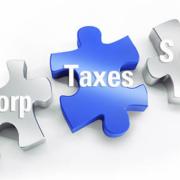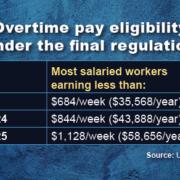When do valuable gifts to charity require an appraisal?
If you donate valuable items to charity and you want to deduct them on your tax return, you may be required to get an appraisal. The IRS requires donors and charitable organizations to supply certain information to prove their right to deduct charitable contributions.
How can you protect your deduction?
First, be aware that in order to deduct charitable donations, you must itemize deductions. Due to today’s relatively high standard deduction amounts, fewer taxpayers are itemizing deductions on their federal returns than before the Tax Cuts and Jobs Act became effective in 2018.
If you clear the itemizing hurdle and donate an item of property (or a group of similar items) worth more than $5,000, certain appraisal requirements apply. You must:
- Get a “qualified appraisal,”
- Receive the qualified appraisal before your tax return is due,
- Attach an “appraisal summary” to the first tax return on which the deduction is claimed,
- Include other information with the return, and
- Maintain certain records.
Keep these definitions in mind. A “qualified appraisal” is a complex and detailed document. It must be prepared and signed by a qualified appraiser. An “appraisal summary” is a summary of a qualified appraisal made on Form 8283 and attached to the donor’s return.
While courts have allowed taxpayers some latitude in following these rules, you should aim for exact compliance.
The qualified appraisal isn’t submitted to the IRS in most cases. Instead, the appraisal summary, which is a separate statement prepared on an IRS form, is attached to the donor’s tax return. However, a copy of the appraisal must be attached for gifts of art valued at $20,000 or more and for all gifts of property valued at more than $500,000, other than inventory, publicly traded stock and intellectual property. If an item of art has been appraised at $50,000 or more, you can ask the IRS to issue a “Statement of Value” that can be used to substantiate the value.
What if you don’t comply with the requirements?
The penalty for failing to get a qualified appraisal and attach an appraisal summary to the return is denial of the charitable deduction. The deduction may be lost even if the property was valued correctly. There may be relief if the failure was due to reasonable cause.
Are there exceptions to the requirements?
A qualified appraisal isn’t required for contributions of:
- A car, boat or airplane for which the deduction is limited to the charity’s gross sales proceeds,
- Stock in trade, inventory or property held primarily for sale to customers in the ordinary course of business,
- Publicly traded securities for which market quotations are “readily available,” and
- Qualified intellectual property, such as a patent.
Also, only a partially completed appraisal summary must be attached to the tax return for contributions of:
- Nonpublicly traded stock for which the claimed deduction is greater than $5,000 and doesn’t exceed $10,000, and
- Publicly traded securities for which market quotations aren’t “readily available.”
What if you have more than one gift?
If you make gifts of two or more items during a tax year, even to multiple charitable organizations, the claimed values of all property of the same category or type (such as stamps, paintings, books, stock that isn’t publicly traded, land, jewelry, furniture or toys) are added together in determining whether the $5,000 or $10,000 limits are exceeded.
The bottom line is you must be careful to comply with the appraisal requirements or risk disallowance of your charitable deduction. Contact us if you have any further questions or want to discuss your charitable giving plans.
© 2024












